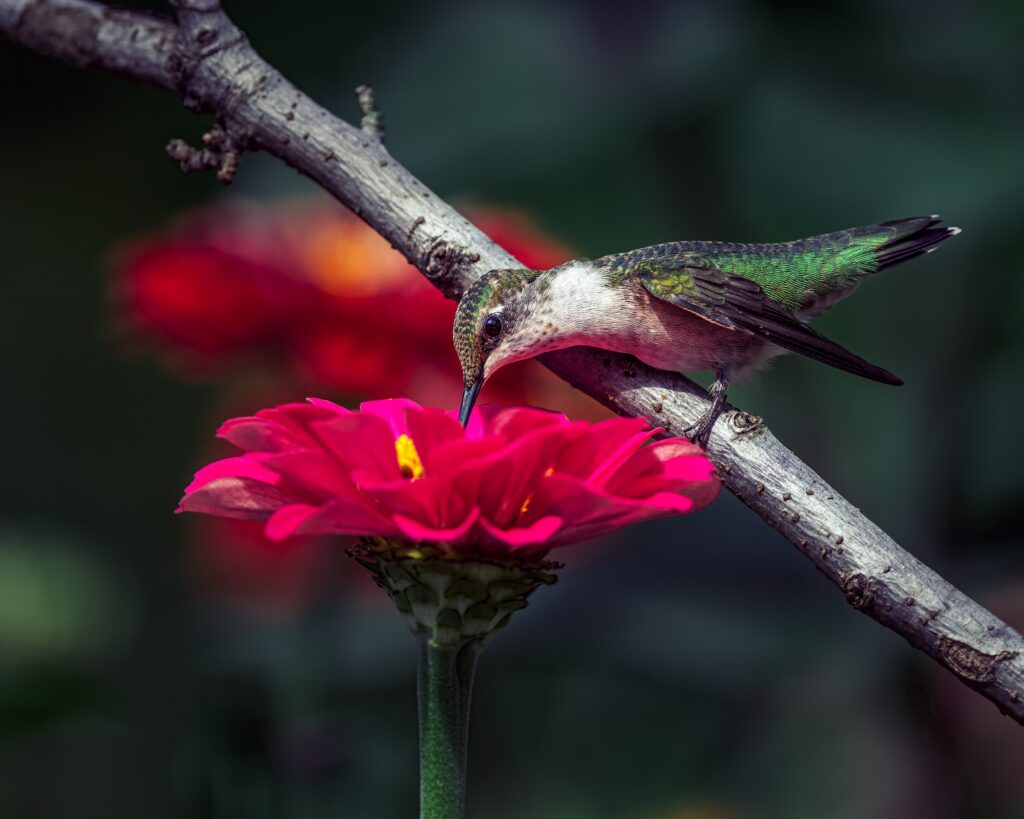As kids hummingbirds were like magic. They’d float effortlessly above the flower beds in the garden fluttering their wings so fast that they’d disappear to the naked eye. How’d they do it? What kind of illusion was this exactly?
But believe it or not, those hummingbirds buzzing through your garden are actually creating a figure-8 with their wings in order to produce the hover-like action that we all associate with them. The delicate vibration of their wings is a welcome sensation to any garden-dweller or bird watcher.
They are special birds, without a doubt. There’s simply nothing else like them in the avian world.
In fact, just recently, some researchers at St. Andrew’s University in Scotland discovered that some hummingbirds have the ability to apply complex numerical ranking to their food source … in other words, despite the natural numerical order of food sources, they can easily and quickly identify and rank, from best to worst, their food sources and will systematically approach each one in this way.
Take a minute to think about that…
A little background on the hummers
There are more than 330 species of hummingbird in the world. All of them in the Western Hemisphere. The majority live in what is called the equatorial belt (10 degrees to the north or south of the equator). And while many undergo migrations there are less than 24 species that end up migrating as far north as the US and Canada. So, in other words, if you’re somewhere that hummingbirds make daily appearances, count your blessings and enjoy it.
Nonetheless, if you’ve seen some of these little guys earlier than you think is natural, you’re probably witnessing the very first migrants of the season – usually male birds. Hummingbird migrations can actually start a bit earlier than some other birds, sometimes showing up as early as February – and sticking around well into the summer. But only a select few species remain in the US year-round (Anna’s are seen all year-round along the Pacific Coast and Allen’s make their migrations as early as December so they are considered partial-residents along the Pacific Coast).
So, what should you focus on if you want to have a hummingbird-haven in the backyard?
Read Next: Do Hummingbirds Sleep?
Annuals, Perennials, Fuschias… Oh My!
Okay, so, attracting hummingbirds is a lot less about annuals and perennials and a lot more about placement, color, climate and whether or not the flowers attract insects. Let’s start off by clearing one thing up: hummingbirds are omnivores. Not only do they love nectar-rich flowers but they supplement their protein intake by consuming small insects as well, in fact around 80% of their diet comes from insects and spiders.
But, without available flowers, hummingbirds would struggle immensely to survive. They have to eat roughly every 15 minutes and can visit up to 1000 individual blooms each day.
There are far too many flowers to list in a small article like this, but in general there are some flowers that are most effective in different climates.
First and foremost, color does matter. Red flowers are without a doubt the best but there are plenty of flowers that are not red that still attract hummingbirds. Strong, bright colors, long tubular or cone-shaped blooms and high nectar content are the most important factors to consider when designing a hummingbird-friendly garden. Hummingbirds aren’t known for being fantastic smellers so they rely on identifying colors – and are drawn in by bright red, purples, blues etc.
When considering the design of your garden there are a handful of potted perennials, biennials and annuals that you can rely on to attract hummingbirds. Some examples:
Annuals that Attract Hummingbirds:
1. Cleomes
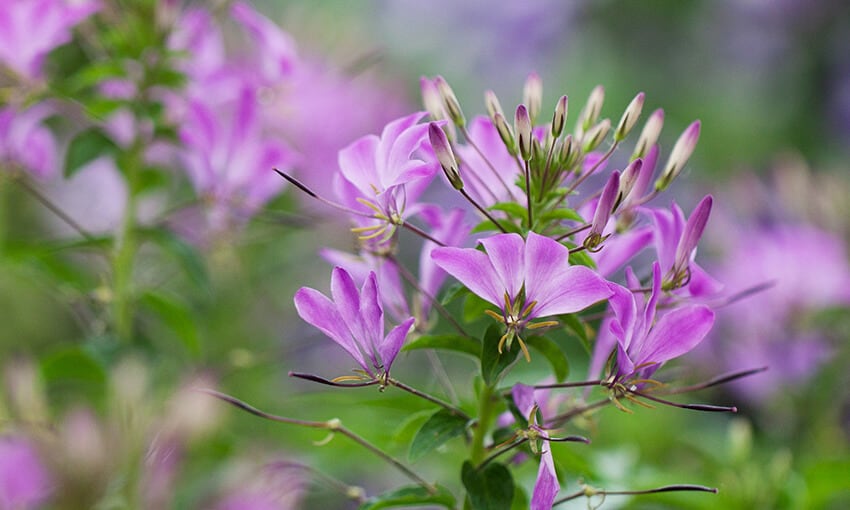
2. Impatiens
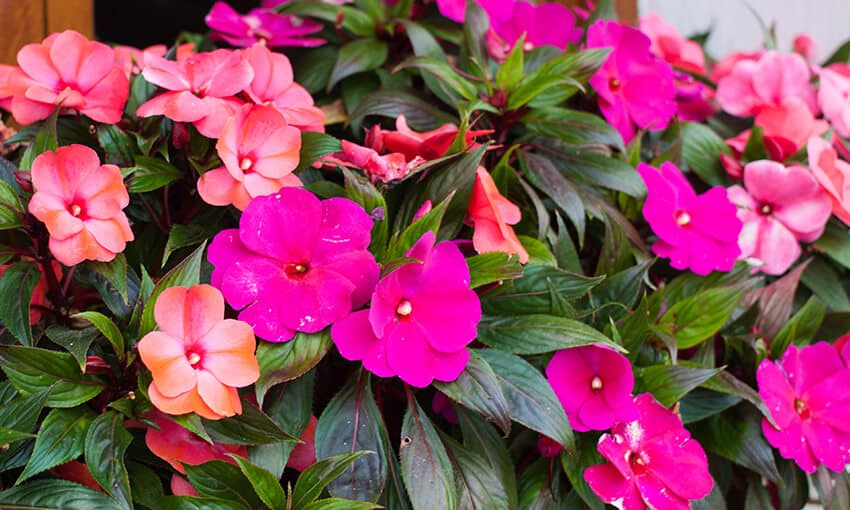
3. Petunias
Perennials that Attract Hummingbirds:
1. Bee balms
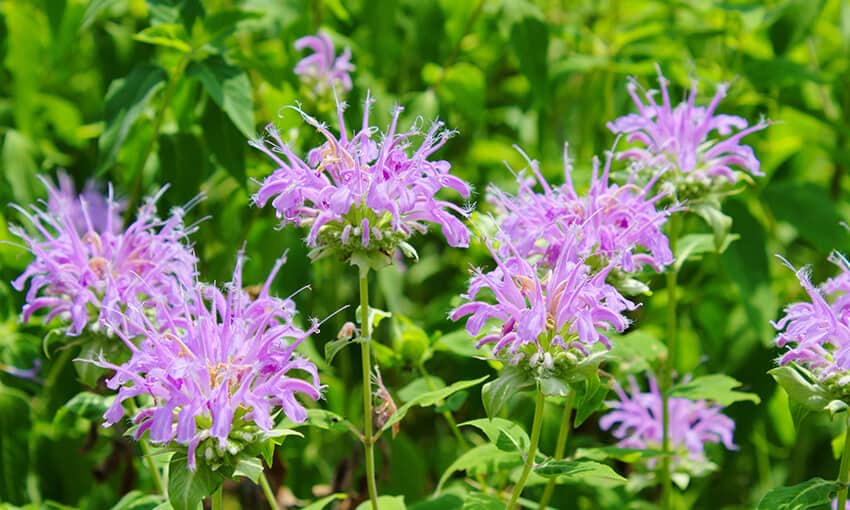
2. Columbines
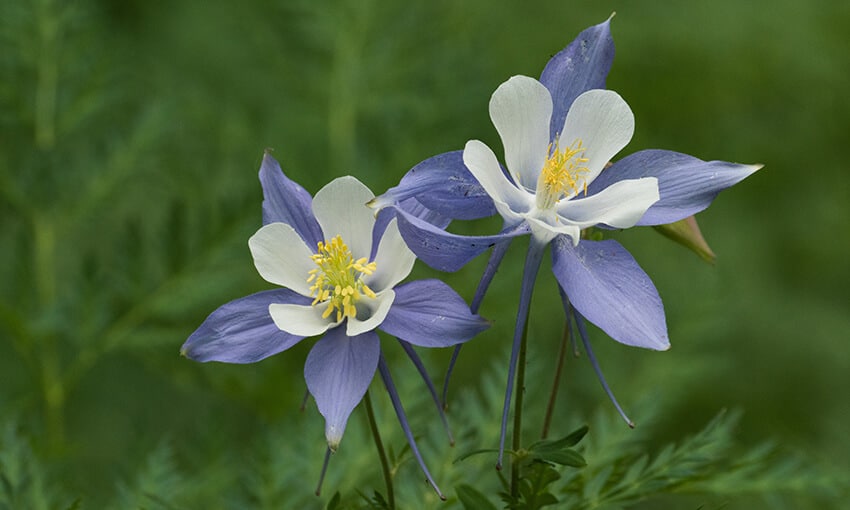
3. Daylilies
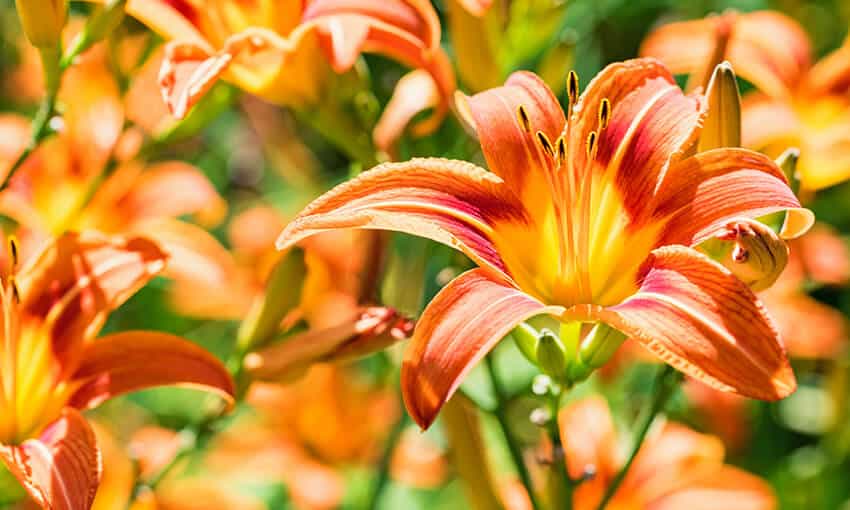
4. Lupines
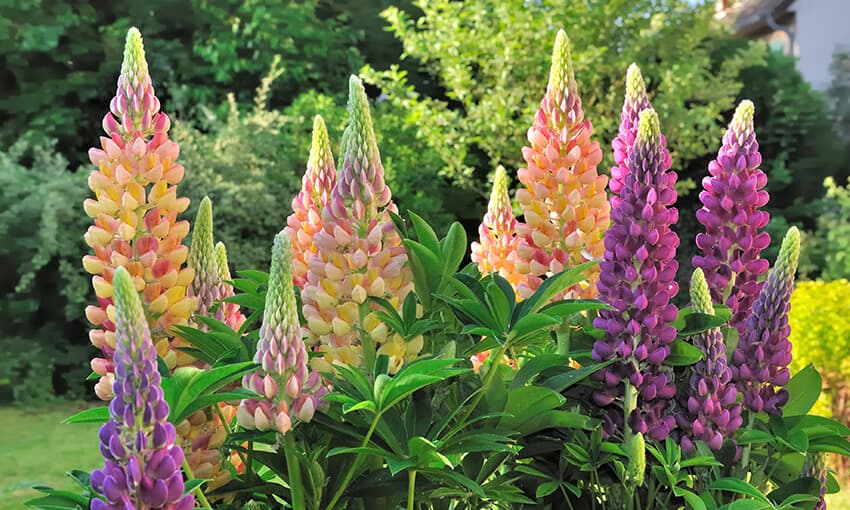
Biennials That Attract Hummingbirds:
1. Foxgloves
2. Hollyhocks
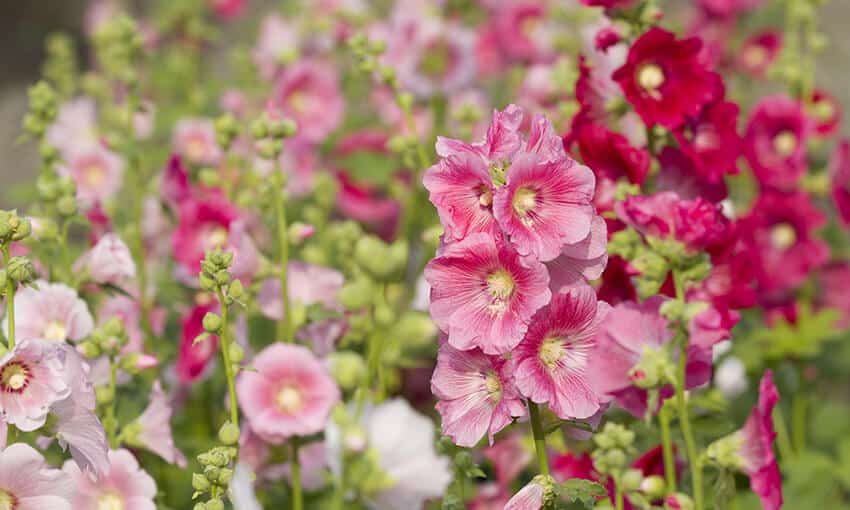
It’s worth noting that your location matters here. Regional differences in native vegetation are important to consider. Planting native species of a type of flower is one of the most surefire ways to attract the most hummingbirds to your garden. Most regions in the US have versions of each of the above plants.
It’s also worth noting that a strong combination of annuals, perennials and biennials is vital in producing a full season of consumption availability for hummingbirds. Annuals produce nectar right away, drawing hummingbirds to the garden while some of the other plants will pop up during the summer and provide extra (possibly more nectar-rich) blooms.
Now, Fuchsias themselves are also fantastic flowers for hummingbirds and most Fuchsias have evolved to have downward facing tubular blooms, almost protecting themselves from anything other then highly nimble hummingbirds that can handle the maneuvers required to collect the nectar from the plant.
One of the reasons that Fuchsias are often thought of as the life-source of a hummingbird garden is that it’s bloom time is extremely long, often showing blooms from June-Thanksgiving, and living through the winter. So finding other plants that have long bloom times is another method to attract hummers.
Window boxes for Hummingbirds
There are a few reasons why having a strategic placement of window boxes and other containers will stoke the flame of interest from hummingbirds in your garden. First and foremost, hummingbirds are curious birds and love to fly around the garden from pot to windowsill to tree branch. Secondly, window boxes can sometimes be placed higher than potted plants and will be the initial attraction-factor, in other words, a hummingbird checking out your garden from a distance will notice those bright red/pink petunias in the window box.
The shape of the box itself is a little less important than the placement of the boxes. That being said, boxes that allow easy access to flowering plants that have downward facing blooms (which hummingbirds love) are the best. But it’s more about the configuration of boxes. Creating a terracing effect in the garden is ideal, producing levels where hummingbirds can jump from shelf to shelf and explore the different blooms.
Two extra ways to create a highly hummingbird-friendly garden is to include well-developed climbing vines with blooms and to have a few hanging baskets around the garden. Taking advantage of the different topography in your garden is a great way to produce a natural sense of foraging for hummingbirds.
Symbiosis with Hummingbirds
Sure, hummingbirds are incredibly beautiful and one of planet Earth’s most unique creatures. They are fun to watch and provide hours of entertainment for any amateur gardener. But hummingbirds can also play a vital role as a steward of your garden. While the bright, nectar-rich flowers might attract the hummingbirds to your garden, what they are really after is the bevy of insects that your well-designed, and after reading this article, terraced garden, nurtures.
Logically, if your garden is full and diverse with vegetation, it’s probably attracting a whole lot of insects too. Many of those are likely detrimental to the longevity of your garden but worry-not, those hummingbirds are basically the regulators of your garden’s insect flux.
So, enjoy the quiet buzzing of the hummers’ wings as they flutter around your garden and interact with both you and your plants, and remember, that they’re keeping your garden about as clean as can be.
Happy humming!
i Vámos, Tas I. F., et al. “Numerical Ordinality in a Wild Nectarivore.” Proceedings of the Royal Society B: Biological Sciences, vol. 287, no. 1930, 2020, p. 20201269., doi:10.1098/rspb.2020.1269.
ii “Species of Hummingbirds.” Hummingbird Species, with Common Names, Sizes, Scientific Names and Photos, 2020, www.hummingbirdcentral.com/hummingbird-species.htm.
iii “Do Hummingbirds Migrate?” American Bird Conservancy, 12 Sept. 2019, abcbirds.org/blog/ do-hummingbirds-migrate/.
iv Garvey, Kathey Keatley. “What You May Not Know About Hummingbirds.” ANR Blogs, 5 Mar. 2019, ucanr.edu/blogs/blogcore/postdetail.cfm?postnum=29582.
v International Hummingbird Society. Hummingbirds 101, Parasol, Llc, 2020.
vi Mayntz, Melissa. “Discover the Top 10 Flowers for Attracting Hummingbirds.” The Spruce,2020, www.thespruce.com/top-hummingbird-flowers-386271.
vii Boeckmann, Catherine. “Plants That Attract Hummingbirds.” Old Farmer’s Almanac, 11 Feb. 2020, www.almanac.com/content/plants-attract-hummingbirds#.
viii Nowak, Jeff. “Using Nectar Flowers to Attract Hummingbirds.” Birds and Blooms, Birds and Blooms, 24 Apr. 2020, www.birdsandblooms.com/gardening/plants-and-flowers-to-attract- hummingbirds/using-nectar-flowers-attract-hummingbirds/.
ix Plant Container Gardens to Attract Hummingbirds, Butterflies and More., www.gardening- for-wildlife.com/container-gardens.html.
x Kress, Stephen W. “Designing A Hummingbird Garden: 15 Ways to Keep Them Coming.” Audubon, 12 Nov. 2019, www.audubon.org/designing-hummingbird-garden-15-ways-keep- them-coming.

